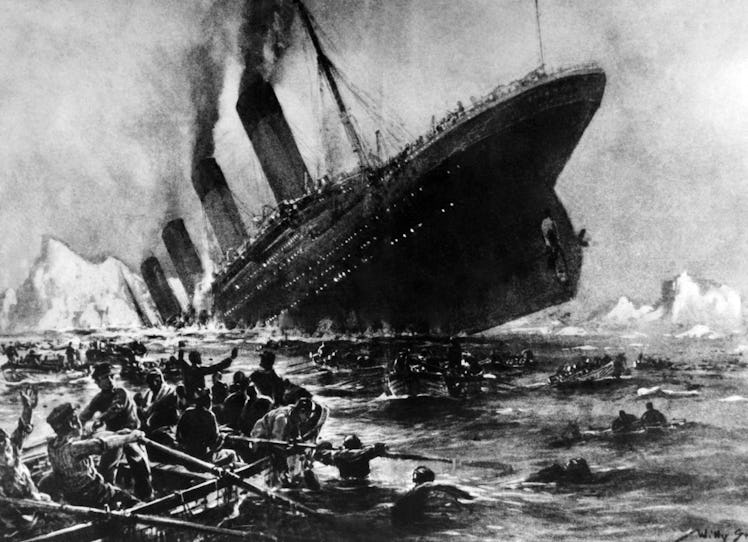
This Surviving Letter Written Before The Titanic Sank Will Both Fascinate & Disturb You
Gone are the days of romantic letter writing, but that doesn't mean the value of letters has gone down. On the contrary. A letter that survived the sinking of the Titanic was just sold for £126,000 ($166,000), according to History.com. The letter was recovered from the body of a man named Oskar Holverson, a first-class passenger who perished and was among the floating bodies recovered in the days after the tragic sinking.
*shivers*
The letter — whose purchase price broke records — is reportedly important for several reasons, not least of which is the fact that Holverson, who had addressed the letter to his mother, took the time to describe the day-to-day life on the massive ship: "the ship, the food, and even fellow passenger John Jacob Astor." It gives us an intimate look at life on the Titanic before the ship sank.
Holverson wrote of Astor, the richest man in the world at the time,
He looks like any other human being even tho [sic] he has millions of money. They sit out on the deck with the rest of us.
Plus, according to the auctioneer who valued and sold the letter, Andrew Aldridge, "[I]t is the only letter written on Titanic stationery to have actually survived going into the North Atlantic."
The Titanic, as you may remember if you have a pulse and/or were alive in 1997, was, when it set sail in 1912, the largest luxury cruiser in the world. During its maiden voyage from England to New York, it collided with an iceberg — or did it? — and sank in the North Atlantic Ocean, killing over 1,500 of the approximately 2,200 passengers and crew aboard.
As interesting as Holverson's letter is, it's also kind of macabre, thinking about what it took to recover it and the fact that someone was willing to pay twice what the average American family makes in a year to get their hands on it.
The letter was recovered from his body during recovery efforts in the days after the Titanic sank. Many of the bodies were floating at the surface due to the fact that they were wearing life jackets when they died.
That's right: several people had to row through the wreckage and dig through dead bodies. The task, according to correspondence and recollections written by rescuers, was horribly grim, the ocean littered with bodies. One recovery ship spent nearly two weeks at sea.
According to Encyclopedia Titanica, Frederick Hamilton, a cable engineer aboard the White Star Liner ship, the Mackay-Bennett — part of the same company that built the Titanic — wrote in his journal of the recovery efforts:
It has been an arduous task for those who have had to overhaul and attend to the remains, the searching, numbering, and identifying of each body, depositing the property found on each in a bag marked with a number corresponding to that attached to the corpse, the sewing up in canvas and securing of weights, entailed prolonged and patient labour.
The Embalmer is the only man to whom the work is pleasant, I might add without undue exaggeration, enjoyable, for to him it is a labour of love, and the pride of doing a job well.
This is the same rescue and recovery effort that would lead to the discovery of Holverson's letter. And Holverson wasn't the only former passenger who had valuable goods on his body, though his letter has only become more valuable due to the romanticized global obsession with the Titanic. (Thanks, Leo!) According to letters, rescuers found jewelry, money, and more.
They also put hundreds of bodies on ice to be identified and claimed by family members, and allegedly dumped other bodies overboard due to lack of space.
Personally, if I were going to mess with old artifacts recovered from dead people, I'd go for something shinier. But Vice President of Titanic Museum Attractions in Missouri and Tennessee Paul Burns told History.com that Holverson's letters — and all letters recovered from the Titanic, for that matter — are “probably the most poignant of the artifacts" by revealing the thoughts of people who perished, as well as survivors' thoughts on the experience, before the, you know, disaster.
Definitely super cool and historically fascinating, but I'll stay far away from a 105-year-old letter that was taken from a dead body.
But, you know, that's just me. You do you.